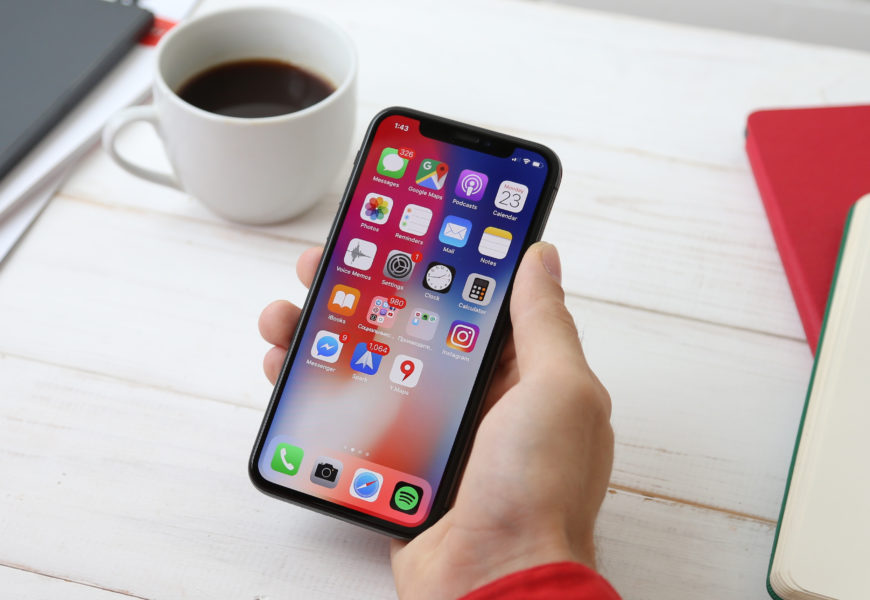iPhone X. Photo courtesy of Yura Fresh/Unsplash.
In a “CNBC Make It” article published back in June, Kathleen Elkin details how millennials spend their money compared to their predecessors. The chart included in the article with data from Charles Schwab shows how millennials are more likely to spend money on non-essential costs such as $4.00 coffees and transportation for convenience as opposed to necessity. When the Voice asked students at Conn about this trend, one senior said, “Price doesn’t matter to me with coffee. I justify spending the money because a good coffee in the morning brings me happiness,” suggesting that students are willing to spend the money if it means having a quality coffee in the morning. With the recent release of the iPhone X, which costs over $1,000 at retail price, the millennial generation will be tested over whether to buy the latest “electronic gadget.” According to Charles Schwab’s data, millennials will not be able to resist “Apple Culture” as more and more of their peers begin purchasing the new iPhone. 76% of millennials said they spend their money on the latest gadget compared to 66% of Gen X and 49% of baby boomers.
The iPhone X made its debut just two weeks ago on Nov. 3, and the much anticipated launch did in fact produce lines out the doors of the Apple stores as consumers eagerly awaited what Apple believes to be their “biggest hit yet.” Apple released a limited supply of the iPhone X due to the intricacy of this specific product’s technology, which required a slower manufacturing process for Apple.
As a company, Apple’s main growth product since 2007 has been the iPhone. Apple continues to roll out new models each year in what’s now termed the “iPhone Cycle.” With each new device release, more and more people have felt that the previous models they’ve purchased are enough. Why upgrade when your current model works flawlessly? Back in August, I interviewed people on the streets of New York City for my internship at CNBC. I asked twenty people whether they were excited for the iPhone X to come out and if they would be willing to spend over $1,000 on an iPhone. One woman responded saying, “It is not very important for me to have the lastest version of the iPhone as long as the one I have still functions and does what it needs to do.” Most people just didn’t care about the newest iPhone and were perfectly happy with their iPhone 6 or 7.
The common perception of millennials by previous generations is that they need to keep up with current trends. When the Voice asked twenty Conn students whether they were planning to upgrade to the iPhone X, no one said yes. All agreed that the iPhone has become a fashion statement, a way to flaunt a person’s economic status. When asked the 1,000 dollar question: would you spend $1000 on a new iPhone? none of the surveyed students responded in the affirmative, saying they were not willing to spend that amount of money on a new iPhone, or any phone, for that matter. A first year commented, “I have no complaints about my iPhone 7. It works like I need it to and I simply don’t have the funds to pay for the iPhone X.”
In reality, many users have probably spent close to that amount of money over the course of their two-year phone contracts without even realizing it. When people hear $49.91 a month for two years, the total cost of $1,197.84 doesn’t seem so horrible. However, when they hear $1,000 up front, they immediately dismiss the idea of spending it. Yet every year, Apple releases a successful product that consumers inevitably end up purchasing due to so-called Apple culture. A junior remarked that, “Apple is the new norm; it’s not normal to have a Samsung phone.”
The niche group of individuals targeted by Apple who can afford to spend $1,000 on a phone is limited. The Apple culture that once drove consumers to buy the latest model has to some extent subsided, yet the general buzz for the new product is still keeping sales healthy. As with any new product, the question still remains: will Apple be able to keep this up? Or will the excitement over the iPhone X die out when the reality of its $1,000 price sets in?
Click here for the CNBC article and chart comparing millennials’ spending vs. their parents.









